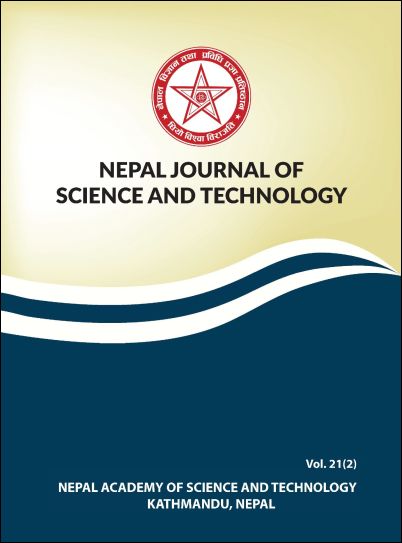Study of Structural Properties of Solar Energy Material CH3 NH3 PbX3 (X= I, Br and Cl) Perovskites and its Mixed Halides Using Density Functional Theory
DOI:
https://doi.org/10.3126/njst.v21i2.62360Keywords:
Density Functional Theory, Perdew-Burke-Ernzerh, Generalized Gradient Approximation, Ultra soft Pseudopotentials, Local Density approximation, Projected Augmented WaveAbstract
The present study has explored the electronic properties of Organic-inorganic mixed halide-based perovskites using density functional theory. The Quantum Espresso simulation package with PBE parameterization within the generalized gradient approximation (GGA) has been used in this work. The findings reveal that the addition of halogens (bromide and chlorine) to compound CH3NH3PbI3 for all the possible substituted halides may cause the shifting of energy bands in the band structure and thus change the bandgap. Hence, this calculation may be used to design perovskite solar cell material with varied electronic structure.
Downloads
Downloads
Published
How to Cite
Issue
Section
License
Copyright (c) 2022 The Author(s)

This work is licensed under a Creative Commons Attribution-NonCommercial 4.0 International License.
Authors retain copyright and grant the journal right of first publication.




